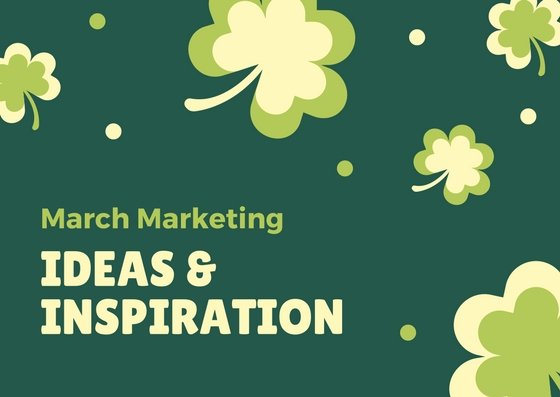- 1. How Has Video Marketing Impacted Sales?
- 2. Why Do Consumers Trust Recommendations Over Other Forms of Advertising?
- 3. Are Businesses Increasing Their Digital Marketing Budgets in 2024?
- 4. How Prevalent is Content Marketing Among B2B Marketers?
- 5. How Significant is Mobile Traffic in 2024?
- 6. What is the Current Investment in Content Marketing?
- 7. How Influential are Influencer Recommendations?
- 8. What is the ROI of Email Marketing?
- 9. How Widespread is the Use of Video in Marketing?
- 10. Why is Personalization Important in Marketing?
- 11. How Much is Spent on Social Media Advertising?
- 12. Are Marketers Increasing Their Social Media Budgets?
- 13. What is the Priority for Inbound Marketing?
- 14. How Important is Organic Search Traffic?
- 15. How Do Local Searches Impact Store Visits?
- 16. How Do Search Engines Influence Online Experiences?
- 17. How Many Online Interactions Start with a Search Query?
- 18. What Frequency of Promotional Emails Do Consumers Prefer?
- 19. How Common Are B2B Queries on Smartphones?
- 20. How Significant is the Investment in SEO?
- 21. How Much Time is Spent on Social Media via Mobile Devices?
- 22. How Popular is Live Streaming?
- 23. How Common are Webinars in B2B Marketing?
- 24. How Prevalent is Email Automation?
- 25. What is the Share of Video Ads in Total Ad Spending?
- 26. How Popular is Mobile Video Consumption?
- 27. How Effective is Social Media Marketing?
- 28. How Frequently Do Marketers Create Content?
- 29. What is the Most Effective Distribution Channel for B2B Demand Generation?
- 30. How Common is the Use of Digital Marketing Plans Among Small Businesses?
- We got all the latest Marketing Stats here:
Welcome to 2024! As we embark on this new year, it’s more important than ever to understand the latest trends and data in online marketing. Whether you’re a seasoned marketer or just starting, staying informed about the current statistics can help you craft strategies that drive results. In this article, we’ll dive into the most relevant online marketing statistics that will guide your strategy for 2024. These insights will not only help you understand the current landscape but also enable you to make data-driven decisions that enhance your marketing efforts.
Let’s jump into the statistics that will shape your online marketing strategy for the year ahead.
1. How Has Video Marketing Impacted Sales?

78% of marketers say video has directly helped increase sales.
Video marketing continues to be a powerhouse in the digital world. It’s not just about creating content but creating content that engages and converts. With 78% of marketers acknowledging that video has directly boosted their sales, it’s clear that video should be a central component of your marketing strategy. Whether through product demos, customer testimonials, or explainer videos, incorporating video can significantly enhance your ability to attract and retain customers.
Why Video Works
Videos provide a dynamic and engaging way to convey your message. They can simplify complex information, showcase products in action, and build a stronger emotional connection with your audience. Additionally, videos are easily shareable, increasing your reach and potential customer base.
2. Why Do Consumers Trust Recommendations Over Other Forms of Advertising?
92% of consumers trust recommendations from friends and family over other forms of advertising.
Word-of-mouth remains one of the most powerful forms of marketing. In an age where consumers are bombarded with ads, personal recommendations cut through the noise. When a friend or family member recommends a product, it carries more weight than a paid advertisement. This trust can be leveraged by encouraging satisfied customers to share their experiences and by implementing referral programs.
Building Trust Through Authenticity
Authentic customer reviews and testimonials can also play a critical role in your marketing strategy. Showcase these on your website and social media channels to build credibility and trust with potential customers.
3. Are Businesses Increasing Their Digital Marketing Budgets in 2024?
63% of businesses have increased their digital marketing budgets for 2024.
The competition in the digital space is heating up, and businesses are responding by boosting their marketing budgets. Investing more in digital marketing allows companies to explore new channels, enhance their content, and leverage advanced tools and technologies. For your business, this means it’s crucial to allocate sufficient resources to stay competitive and reach your target audience effectively.
Where to Invest
Consider investing in areas that show the highest return on investment (ROI), such as social media advertising, search engine optimization (SEO), and email marketing. Each of these channels offers unique benefits and can help you achieve your marketing goals.
4. How Prevalent is Content Marketing Among B2B Marketers?
89% of B2B marketers use content marketing to generate leads.
Content marketing is a staple in the B2B world. By providing valuable, informative content, businesses can attract and nurture leads through the sales funnel. This statistic underscores the importance of developing a robust content marketing strategy that addresses the needs and pain points of your target audience.
Creating Valuable Content
Focus on creating high-quality content that educates and informs your audience. This can include blog posts, whitepapers, case studies, and webinars. The goal is to establish your brand as a thought leader and build trust with potential clients.
5. How Significant is Mobile Traffic in 2024?
Mobile devices account for 54% of global web traffic.
The shift to mobile continues to grow, with more than half of all web traffic coming from mobile devices. This trend highlights the importance of optimizing your website and content for mobile users. Ensuring a seamless mobile experience can lead to higher engagement and conversions.
Mobile Optimization Tips
Make sure your website is responsive and loads quickly on mobile devices. Simplify navigation and ensure that all elements are touch-friendly. Additionally, consider mobile-specific content strategies, such as shorter, more digestible content formats.
6. What is the Current Investment in Content Marketing?
70% of marketers are actively investing in content marketing.
Content marketing remains a key focus for many marketers. By producing valuable content, businesses can attract, engage, and retain customers. This investment in content marketing reflects its effectiveness in building brand awareness and driving conversions.
Types of Content to Consider
Explore different types of content, including blogs, videos, infographics, and podcasts. Each format has its own strengths and can help you reach different segments of your audience. Experiment with various content types to see what resonates best with your audience.
7. How Influential are Influencer Recommendations?
49% of consumers rely on influencer recommendations for their purchase decisions.
Influencer marketing has become a powerful tool for brands. Consumers trust influencers because they see them as authentic and relatable. Partnering with influencers can help you reach new audiences and build credibility for your brand.
Choosing the Right Influencers
When selecting influencers, consider their audience size, engagement rates, and relevance to your brand. It’s essential to choose influencers who align with your brand values and can authentically promote your products or services.
8. What is the ROI of Email Marketing?
Email marketing generates $42 for every $1 spent.
Email marketing continues to deliver impressive returns on investment. It’s a cost-effective way to reach your audience and drive conversions. By sending targeted, personalized emails, you can nurture leads and build long-term relationships with your customers.
Effective Email Strategies
Segment your email list to send more relevant content to different groups of subscribers. Personalize your emails with the recipient’s name and tailored content. Additionally, test different subject lines, email designs, and calls to action to optimize your campaigns.
9. How Widespread is the Use of Video in Marketing?
81% of businesses use video as a marketing tool.
Video marketing is not just a trend; it’s a mainstay in the marketing world. With the majority of businesses using video, it’s clear that this medium is effective in engaging audiences and driving results. Videos can be used across various platforms, including your website, social media, and email campaigns.
Types of Videos to Create
Consider creating different types of videos, such as product demos, how-to guides, behind-the-scenes footage, and customer testimonials. Each type of video serves a unique purpose and can help you connect with your audience in different ways.
10. Why is Personalization Important in Marketing?

74% of customers are more likely to buy from brands that provide personalized experiences.
Personalization is key to delivering a great customer experience. When customers feel that a brand understands their needs and preferences, they are more likely to make a purchase. Personalization can take many forms, from tailored product recommendations to personalized email content.
Implementing Personalization
Use data and analytics to understand your customers’ behaviors and preferences. Leverage this information to create personalized marketing messages and offers. The more relevant your content is to each customer, the more likely they are to engage with your brand.
11. How Much is Spent on Social Media Advertising?
Social media ad spending is projected to reach $112 billion by 2024.
Social media advertising is a significant investment for many businesses. With billions of users on platforms like Facebook, Instagram, and LinkedIn, social media offers a vast audience for your ads. Investing in social media advertising can help you increase brand awareness, generate leads, and drive sales.
Maximizing Social Media Ad Spend
To get the most out of your social media ad budget, focus on targeting the right audience. Use the advanced targeting options available on each platform to reach users based on their demographics, interests, and behaviors. Additionally, continually test and optimize your ad creative and messaging to improve performance.
12. Are Marketers Increasing Their Social Media Budgets?
65% of marketers plan to increase their social media budget in 2024.
Social media remains a crucial channel for marketers, and many are planning to invest even more in it this year. Increasing your social media budget can allow you to reach more people, create more engaging content, and leverage advanced advertising features.
Effective Social Media Strategies
Focus on creating high-quality, engaging content that resonates with your audience. Use a mix of organic and paid strategies to maximize your reach. Additionally, engage with your audience by responding to comments, messages, and reviews in a timely manner.
13. What is the Priority for Inbound Marketing?
55% of marketers say blog content creation is their top inbound marketing priority.
Blogging remains a cornerstone of inbound marketing. Regularly publishing high-quality blog content can drive organic traffic, improve your search engine rankings, and establish your brand as an authority in your industry. With over half of marketers prioritizing blog content, it’s clear that this strategy is effective in attracting and engaging audiences.
Creating Effective Blog Content
To maximize the impact of your blog, focus on producing content that addresses the needs and interests of your target audience. Use keyword research to identify topics that your audience is searching for, and optimize your posts for SEO to increase visibility. Additionally, promote your blog content through social media and email marketing to reach a wider audience.
14. How Important is Organic Search Traffic?
Organic search drives 53% of all website traffic.
Organic search is a vital source of traffic for most websites. By optimizing your site for search engines, you can attract more visitors who are actively looking for the products or services you offer. This statistic highlights the importance of investing in SEO to ensure that your website ranks well for relevant search queries.
SEO Best Practices
Focus on both on-page and off-page SEO strategies. On-page SEO includes optimizing your content, meta tags, and images for relevant keywords. Off-page SEO involves building high-quality backlinks to your site and promoting your content on other platforms. Regularly monitor your site’s performance and make adjustments as needed to improve your rankings.
15. How Do Local Searches Impact Store Visits?
72% of consumers who do a local search visit a store within five miles.
Local SEO is crucial for businesses with physical locations. When consumers search for products or services near them, they are often ready to make a purchase. By optimizing your website for local search terms and ensuring that your business appears in local listings, you can drive more foot traffic to your store.
Optimizing for Local Search
Make sure your business information is accurate and consistent across all online directories, including Google My Business, Yelp, and local business listings. Encourage satisfied customers to leave positive reviews, and respond to any negative reviews promptly. Additionally, create locally-focused content to attract nearby customers.

16. How Do Search Engines Influence Online Experiences?
68% of online experiences begin with a search engine.
Search engines are the starting point for most online activities. Whether users are looking for information, products, or services, they typically turn to search engines first. This statistic underscores the importance of having a strong SEO strategy to ensure that your website appears in relevant search results.
Enhancing Your Search Engine Presence
To improve your search engine presence, focus on creating high-quality, relevant content that addresses the needs of your audience. Use keyword research to identify the terms your audience is searching for, and optimize your content accordingly. Additionally, ensure that your website is mobile-friendly and loads quickly, as these factors can impact your search rankings.
17. How Many Online Interactions Start with a Search Query?
93% of online interactions start with a search engine query.
The vast majority of online interactions begin with a search engine query. This makes it essential for businesses to optimize their websites for search engines to capture this traffic. By understanding what your audience is searching for and tailoring your content to meet those needs, you can increase your chances of appearing in search results and attracting potential customers.
Tailoring Content for Search Queries
Use tools like Google Analytics and Google Search Console to understand which search queries are driving traffic to your site. Create content that answers common questions and provides valuable information related to these queries. Additionally, use structured data to enhance your search listings and make them more appealing to users.
18. What Frequency of Promotional Emails Do Consumers Prefer?
86% of consumers prefer receiving promotional emails monthly.
Email marketing is a powerful tool, but it’s important to get the frequency right. Most consumers prefer to receive promotional emails on a monthly basis, which strikes a balance between staying top-of-mind and avoiding email fatigue. By respecting this preference, you can maintain a positive relationship with your subscribers.
Crafting Effective Promotional Emails
When sending promotional emails, focus on providing value to your subscribers. Highlight special offers, new products, or valuable content that aligns with their interests. Use compelling subject lines to increase open rates and ensure that your emails are visually appealing and easy to read on all devices.
19. How Common Are B2B Queries on Smartphones?
50% of B2B queries are made on smartphones.
Mobile usage isn’t just for consumers; it’s also prevalent in the B2B space. Half of all B2B queries are made on smartphones, emphasizing the need for mobile-optimized content and websites. Ensuring that your digital presence is mobile-friendly can enhance the user experience and improve your chances of capturing leads.
Mobile Optimization for B2B
Ensure that your website is fully responsive and provides a seamless experience on mobile devices. Simplify navigation and make it easy for users to find the information they need. Additionally, consider creating mobile-specific content, such as shorter blog posts and concise, actionable insights.
20. How Significant is the Investment in SEO?

64% of marketers actively invest in search engine optimization (SEO).
SEO is a crucial component of any digital marketing strategy. With 64% of marketers actively investing in SEO, it’s clear that this practice is essential for driving organic traffic and improving search engine rankings. A well-executed SEO strategy can increase your visibility, attract more visitors, and ultimately boost your conversions.
Key SEO Strategies
Focus on both technical and content-related aspects of SEO. Ensure that your website is fast, secure, and mobile-friendly. Regularly update your content to keep it relevant and optimize it for target keywords. Additionally, build high-quality backlinks to enhance your site’s authority and improve its search engine rankings.
21. How Much Time is Spent on Social Media via Mobile Devices?
80% of social media time is spent on mobile devices.
Social media usage is predominantly mobile, with 80% of time spent on these platforms occurring on mobile devices. This trend highlights the importance of optimizing your social media content for mobile users. Ensuring that your posts, ads, and overall social media presence are mobile-friendly can enhance user engagement and improve your marketing results.
Mobile-Friendly Social Media Content
Create visually appealing and easy-to-consume content for mobile users. Use short videos, high-quality images, and concise text to capture attention. Additionally, take advantage of mobile-specific features on platforms like Instagram Stories and Facebook Live to engage with your audience in real-time.
22. How Popular is Live Streaming?
Live streaming is predicted to account for 82% of all internet traffic by 2024.
Live streaming is set to dominate internet traffic in the coming years. This medium allows businesses to engage with their audience in real-time, creating a sense of immediacy and connection. Whether through product launches, Q&A sessions, or behind-the-scenes content, live streaming offers a dynamic way to interact with your audience.
Leveraging Live Streaming
Plan and promote your live streams in advance to build anticipation. Engage with your audience during the live stream by answering questions and responding to comments. After the stream, repurpose the content by sharing highlights or creating blog posts and social media clips to extend its reach.
23. How Common are Webinars in B2B Marketing?
71% of B2B marketers use webinars in their marketing strategies.
Webinars are a popular tool in B2B marketing, providing an effective way to educate and engage potential clients. They allow businesses to showcase their expertise, demonstrate products, and build relationships with prospects. With 71% of B2B marketers using webinars, it’s clear that this strategy can drive significant results.
Hosting Successful Webinars
Choose topics that address the pain points and interests of your target audience. Promote your webinars through email marketing, social media, and your website to attract attendees. During the webinar, provide valuable insights and engage with participants through polls, Q&A sessions, and interactive elements.
24. How Prevalent is Email Automation?
66% of marketers use automation tools in their email marketing strategies.
Email automation is widely used to streamline marketing efforts and improve efficiency. By automating repetitive tasks, marketers can focus on creating high-quality content and engaging with their audience. Automation tools can help with segmentation, personalization, and timely delivery of emails, enhancing the overall effectiveness of your email marketing campaigns.
Implementing Email Automation
Start by segmenting your email list based on factors like demographics, behavior, and purchase history. Use automation tools to send personalized emails triggered by specific actions, such as abandoned cart reminders or welcome series for new subscribers. Regularly review and optimize your automated campaigns to ensure they are delivering the desired results.
25. What is the Share of Video Ads in Total Ad Spending?

Video ads account for 35% of total ad spending in 2024.
Video ads are a significant part of advertising budgets, reflecting their effectiveness in capturing attention and driving conversions. With 35% of total ad spending going towards video ads, it’s clear that this medium is highly valued by marketers. Video ads can be used across various platforms, including social media, YouTube, and streaming services.
Creating Effective Video Ads
Focus on creating engaging and visually appealing video ads that capture attention quickly. Keep your message concise and include a clear call-to-action. Test different formats, lengths, and placements to see what works best for your audience.
26. How Popular is Mobile Video Consumption?
90% of users watch video content on their mobile devices.
Mobile video consumption is on the rise, with 90% of users watching videos on their mobile devices. This trend emphasizes the need to optimize your video content for mobile viewing. Ensuring that your videos are mobile-friendly can enhance user experience and increase engagement.
Optimizing Videos for Mobile
Create videos that are visually appealing
and easy to watch on small screens. Use captions to make your content accessible to users who watch without sound. Additionally, ensure that your videos load quickly and play smoothly on mobile devices.
27. How Effective is Social Media Marketing?
83% of marketers believe their marketing efforts through social media have been effective.
Social media marketing is widely regarded as an effective strategy for reaching and engaging audiences. With 83% of marketers reporting positive results, it’s clear that social media can drive brand awareness, generate leads, and boost sales. To maximize the effectiveness of your social media marketing, focus on creating valuable content and engaging with your audience.
Best Practices for Social Media Marketing
Develop a content calendar to ensure consistent posting. Use a mix of content types, including images, videos, and text posts, to keep your audience engaged. Additionally, monitor your social media analytics to understand what types of content resonate with your audience and adjust your strategy accordingly.
28. How Frequently Do Marketers Create Content?
60% of marketers create at least one piece of content each day.
Content creation is a daily activity for many marketers. By consistently producing new content, businesses can keep their audience engaged and attract new visitors. This statistic highlights the importance of having a well-planned content strategy that ensures a steady stream of high-quality content.
Maintaining a Consistent Content Schedule
Create a content calendar to plan and schedule your posts in advance. Delegate content creation tasks to different team members to ensure a variety of perspectives and expertise. Additionally, repurpose existing content to extend its lifespan and reach new audiences.
29. What is the Most Effective Distribution Channel for B2B Demand Generation?
79% of B2B marketers believe that email is the most effective distribution channel for demand generation efforts.
Email marketing is highly effective for B2B demand generation. By reaching prospects directly in their inboxes, businesses can nurture leads and build relationships over time. With nearly 80% of B2B marketers endorsing email as the top distribution channel, it’s clear that this strategy can drive significant results.
Optimizing B2B Email Campaigns
Personalize your emails to address the specific needs and interests of your recipients. Use a combination of educational content, case studies, and product information to move leads through the sales funnel. Additionally, track your email performance metrics to identify areas for improvement and optimize your campaigns accordingly.
30. How Common is the Use of Digital Marketing Plans Among Small Businesses?
45% of small businesses with a website use a digital marketing plan.
Having a digital marketing plan is essential for small businesses to compete in the online space. With 45% of small businesses implementing a digital marketing plan, it’s clear that many recognize the importance of strategic planning. A well-crafted plan can help you allocate resources effectively, set clear goals, and measure your progress.
Developing a Digital Marketing Plan
Start by identifying your target audience and understanding their needs and preferences. Set specific, measurable goals for your digital marketing efforts, and outline the tactics you will use to achieve them. Regularly review and adjust your plan based on your performance data and changing market conditions.
We got all the latest Marketing Stats here:
Read Next
- SEO Strategies for Cruise Operators
- SEO for Adventure Travel Companies
- Cultural Sensitivities and International SEO
- How to Optimize for Different Travel Seasons Globally
- Currency and Language Switchers: SEO Best Practices





















Comments are closed.